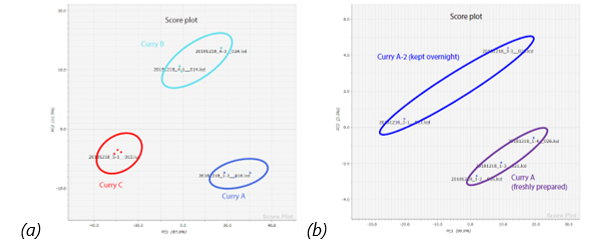This application note examines the metabolomic profile of curries prepared at different locations (i.e. 2 different home locations and a cafeteria) and also investigates the metabolomic changes when the curries were left overnight.
 Have you ever wondered why home-cooked food tastes so different from that cooked in restaurants? What about how certain food tastes better after leaving for a period of time? Maybe the answer lies in the kitchen of billions of molecules which make up our food. We can use food metabolomics or foodomics to understand and explain these phenomena. This approach comprehensively analyses small molecules (metabolites) in food and provides more insights about its composition, safety and quality.
Have you ever wondered why home-cooked food tastes so different from that cooked in restaurants? What about how certain food tastes better after leaving for a period of time? Maybe the answer lies in the kitchen of billions of molecules which make up our food. We can use food metabolomics or foodomics to understand and explain these phenomena. This approach comprehensively analyses small molecules (metabolites) in food and provides more insights about its composition, safety and quality.
This article examines the metabolomic profile of curries prepared at different locations (i.e. 2 different home locations and a cafeteria) and also investigates the metabolomic changes when the curries were left overnight. Comprehensive analyses of 97 hydrophilic metabolites, including amino acids and organic acids, were conducted using Shimadzu’s LCMS-8060 and the LC/MS/MS Method Package for Primary Metabolites V2. Specific food biomarkers in these curries were identified and verified through multivariate analysis.

Score Plots for (a) curries prepared at different locations and (b) curries which are freshly prepared
or kept overnight.
Download this application note...
- Understand what food metabolomics is about and conduct a single LC-MS/MS analysis of 97 hydrophilic metabolites
- Compare the differences in metabolite profiles and identify the characteristic components in different types of curries.




